climate change
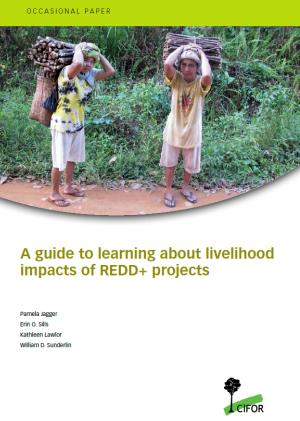
Share
Related Links
"Report: A Guide to Learning About REDD+ (Dec. 2010)
http://www.profor.info/knowledge/social-impact-assessment-forest-carbon-projects...
Attachments
Authors/Partners
Authors: Pamela Jagger, University of North Carolina at Chapel Hill, CIFOR; Erin O. Sills, North Carolina State University, CIFOR; Kathleen Lawlor, University of North Carolina at Chapel Hill; William D. Sunderlin, CIFOR. Partners: The work was supported by Norad, AusAID, DFID, the EU, Finland, the David and Lucile Packard Foundation, PROFOR, USAID and the US Department of Agriculture’s Forest Service.
Maximizing Learning from REDD+ Demonstration Activities (toolkit)
CHALLENGE
Lessons learned from the first generation of sub-national REDD ‘demonstration activities’ will shape the international REDD mechanism’s ability to promote policies and actions that are equitable, effective and efficient. Those lessons will also have a crucial impact on the design of the second generation of REDD strategies and activities. Yet harvesting credible, evidence-based lessons is not as straightforward as it seems.
APPROACH
This knowledge activity was carried out by CIFOR with financial support from PROFOR and other donors. It set out to ensure that first-generation REDD demonstration activities (part of the global process agreed in Bali) would draw on analysis and tools in their design and implementation which maximize learning about how to achieve effectiveness, efficiency and equitability.
RESULTS
This analysis became part of "A guide to learning about livelihood impacts of REDD+ projects" published by CIFOR in December 2010. The report examines the following:
- The case for learning from REDD+
- Counterfactual thinking for learning from REDD+ projects
- Understanding the causal mechanisms that link REDD+ interventions to outcomes
- Practical considerations for understanding the social welfare impacts of REDD+
- Moving ahead with realising REDD+: Guidance for learning about social impacts
The guide provides a unique and integrated method for evaluating the success of REDD+ at the project site level while recognizing that regional and international forces are at play in shaping local outcomes. The guide is accompanied by an executive summary and ten worksheets.
For stories and updates on related activities, follow us on twitter and facebook , or subscribe to our mailing list for regular updates.
Author : Authors: Pamela Jagger, University of North Carolina at Chapel Hill, CIFOR; Erin O. Sills, North Carolina State University, CIFOR; Kathleen Lawlor, University of North Carolina at Chapel Hill; William D. Sunderlin, CIFOR. Partners: The work was supported by Norad, AusAID, DFID, the EU, Finland, the David and Lucile Packard Foundation, PROFOR, USAID and the US Department of Agriculture’s Forest Service.
Last Updated : 06-16-2024
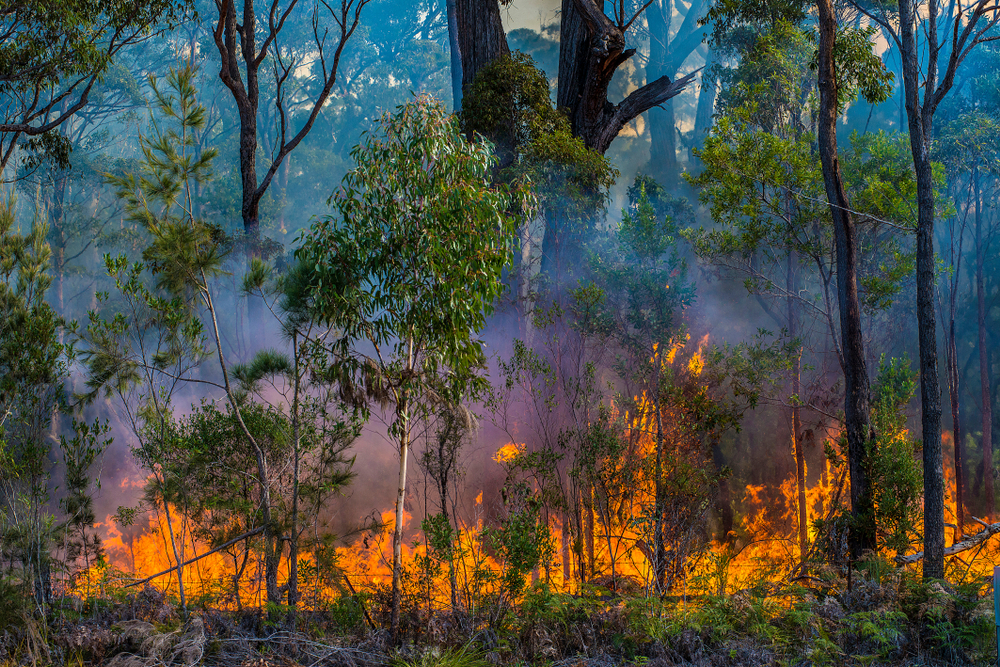
Managing Wildfires in a Changing Climate
In recent years, wildfire seasons have become longer and harsher, causing significant ecological, economic and social damage. In 2019 and into 2020, fires burned across the globe—in the Amazon, Alaska, Australia, California, Europe, Indonesia and Russia—ravaging ecosystems, communities and economies.
For the most part, such extreme wildfires are the result of policy, planning and governance decisions related to land use, coupled with increasingly adverse weather conditions due to climate change. When combined, these factors create the conditions for wildfires to grow into extreme wildfires that exceed humanity’s ability to control and suppress them. The global context for wildfires is changing and countries must take more action to proactively prevent wildfires and to suppress fires when needed to prevent them from becoming extreme wildfires.
This paper takes stock of factors that contribute to extreme wildfires, including climate change, land-use change, and demographic shifts, and recommends policy actions that can be taken to improve wildfire prevention and management depending on national circumstances.
The biggest shift from the current reactive approach, which often relies on emergency response and fire suppression, is increased investment in prevention. Governments can help prevent extreme wildfires through measures such as improved land-use planning, eliminating perverse incentives for using fire to change land use, and clarifying land tenure rights. Other actions include implementing existing fire management techniques such as integrated fire management and fire danger rating, improving fire monitoring and early detection and strengthening stakeholder involvement in fire management planning.
Although investment in wildfire prevention may get less recognition than suppression efforts, it is essential if we are to reduce the social, economic and ecological costs of extreme wildfires. Such preventive and proactive wildfire management is needed if we are to support countries to end extreme poverty, increase shared prosperity, and meet their objectives under the Sustainable Development Goals, the Paris Agreement on climate change and the post-2020 biodiversity framework.
We hope this paper provides countries with the needed policy guidance to shift their approach to one that is more effective in a changing climate.
Foreword by Karin Kemper Global Director, Environment, Natural Resources and Blue Economy World Bank Group
For stories and updates on related activities, follow us on twitter and facebook , or subscribe to our mailing list for regular updates.
Last Updated : 06-16-2024
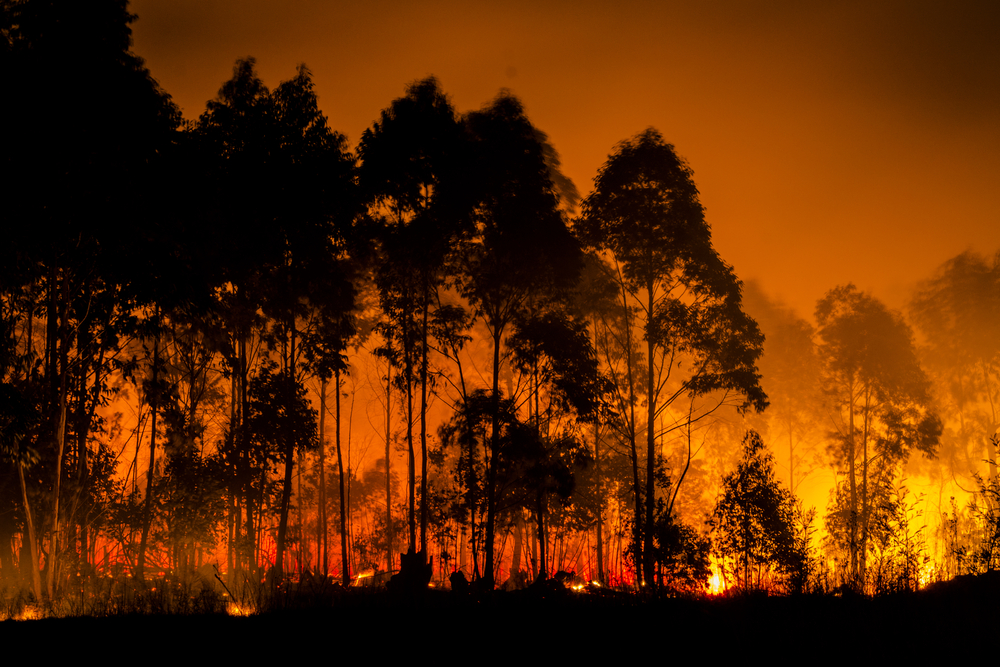
How governments can take action to limit extreme wildfires
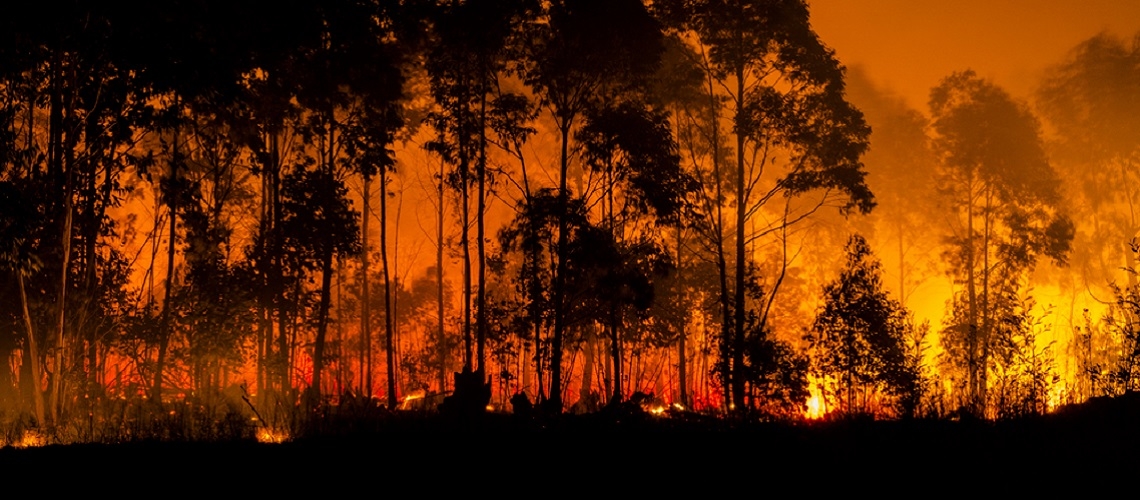
Photo: Shutterstock / Nico Jacobs
This blog by Karin Erika Kemper was originally published on Development and a Changing Climate
Across the globe, wildfire seasons are becoming longer and harsher, and the frequency, intensity and magnitude of extreme wildfires is increasing . The 2020 wildfire season is now on the horizon, and, given the driest summer in Latin America in 14 years, promises to be devastating. In addition, wildfires will be another burden for countries to contend with as they respond to the COVID-19 crisis.
"In 2019 alone, the Global Forest Watch counted over 4.5 million fires worldwide that were larger than one square kilometer."
In 2019 alone, the Global Forest Watch counted over 4.5 million fires worldwide that were larger than one square kilometer. These fires spanned the Amazon, Alaska, Australia, California, Europe, Indonesia and Russia – ravaging ecosystems, communities and economies. What’s more, wildfires destroy habitat, forcing wild animals to flee forest areas and risking increased contact with people and domesticated animals that could lead to the transmission of diseases like COVID-19.
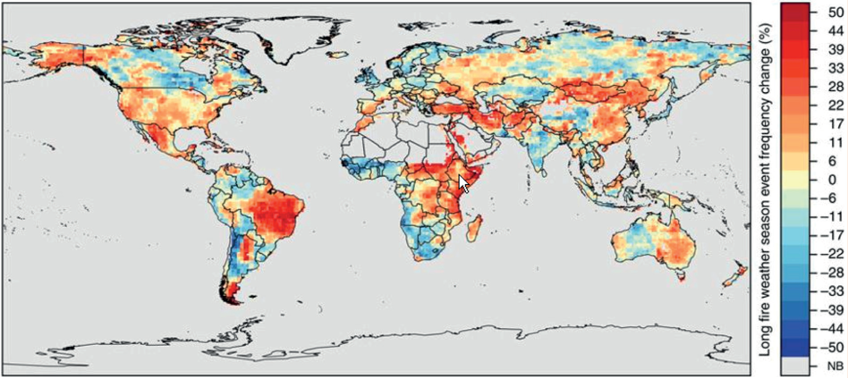
Figure 1 - Global Changes in the Frequency of Long Fire Weather Seasons Over 1979-2013 Due to Climate. Reds indicate areas where fire weather seasons have lengthened or long fire weather seasons have become more frequent. Blues indicate areas where fire weather seasons have shortened or long fire weather seasons have become less frequent. Source: Jolly et al. 2015 in IUFRO 2019
Interestingly, less than 10% of wildfires result in more than 90% of the total area burned annually. These destructive events are known as “extreme wildfires” – fires that exceed humanity’s ability to control and suppress them. For the most part, such extreme wildfires are the result of policy, planning and governance decisions related to land use, coupled with demographic shifts and increasingly adverse weather conditions due to climate change.
So, what can governments do to avoid or mitigate such wildfires in the future?
A new World Bank policy paper Managing Wildfires in a Changing Climate helps answer this question with policy recommendations that can help countries better prepare for this new, more fire-prone world. Here are five suggestions:
- Refocus land use policies and incentives for better land-use planning and management: This entails actions such as eliminating perverse incentives that encourage practices such as clearing forest land for other uses through fire; clarifying land tenure rights to reduce careless use of fire or use of fire to gain access to land; and strengthening coordination across sectors to reduce conflicting practices.
- Invest in both fire suppression and prevention: Worldwide, wildfire management is often treated as an emergency rather than part of routine landscape management. Governments thus need to balance investment in fire suppression with measures to prevent wildfires such as reducing fuel loads, restoring ecosystems to natural fire patterns, and educating fire users.
- Implement existing fire management techniques: Proven practices and tools – such as fire monitoring and early detection, fire danger rating, and asset vulnerability management such as through buffer zones and the adoption of codes and standards – should be implemented or scaled-up.
- Improve wildfire data collection and analysis: Wildfire data collection and analysis is needed to build understanding of what causes a fire and to identify gaps in prevention and response capacities. With good data, governments can review wildfire management practices to identify what works and what doesn’t.
- Strengthen stakeholder coordination and preparedness: Wildfire management and response involves many stakeholders including local communities, various levels of government, the private sector and civil society organizations. Involving all stakeholders in fire management planning helps establish clear functions, tasks and responsibilities to enable effective coordination.
While such wildfire prevention measures may get less recognition and publicity than suppression efforts, they are essential if we are to reduce the social, economic and ecological costs of extreme wildfires and meet objectives under the Sustainable Development Goals, the Paris Agreement on climate change and the post-2020 biodiversity framework.
For stories and updates on related activities, follow us on twitter and facebook , or subscribe to our mailing list for regular updates.
Last Updated : 06-16-2024
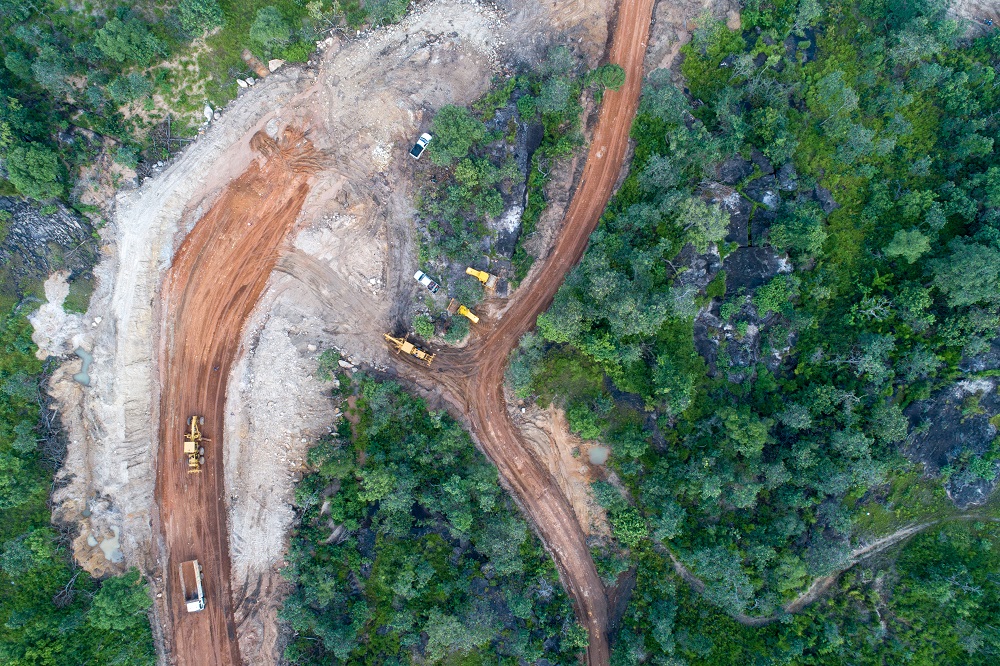
A low-carbon future must protect the world’s forests

The shift to a low-carbon future that includes clean technology such as solar panels, wind turbines, electric vehicles and batteries will require a lot of minerals. In fact, experts predict that between now and 2050 we will need more minerals than have been produced over the past 100 years. This mineral-intensive future has implications for our forests, vital to mitigate global warming. A climate-smart mining approach that protects the world’s forests is essential to reduce carbon emissions and fight climate change. Currently about 1,500 large-scale mines in the world are in tropical forests and a further 1,800 are under development or currently non-operational. More than half of these large-scale forest mines are in low- or lower-middle-income countries.
Forests provide an important carbon sink for mitigating climate change. According to the World Resources Institute, if tropical forests combined were a country, deforestation would rank third in carbon dioxide–equivalent emissions, behind China and the United States. Generically speaking, forest loss is driven by economic activity, mainly commercial and subsistence agriculture. Yet, mining plays an important, though less understood role, accounting for an estimated 7 percent of total forest loss. As the future of our planet hinges on tenths of degrees Celsius, 7 percent may well make the difference.
At a national level, mining is contributing to emissions from forest loss in numerous countries and is a dominant cause of deforestation in some. For example, in Suriname, mining is responsible for 73 percent of total deforestation, with the majority attributed to artisanal and small-scale mining (ASM) for gold.
With so much at stake, the World Bank has developed what we call a forest-smart approach to mining – ensuring that this increased need for metals and minerals will not be at the expense of forests. Thus a Climate-Smart Mining approach also needs to be Forest-Smart. Three new reports released today offer solutions to address this challenge.
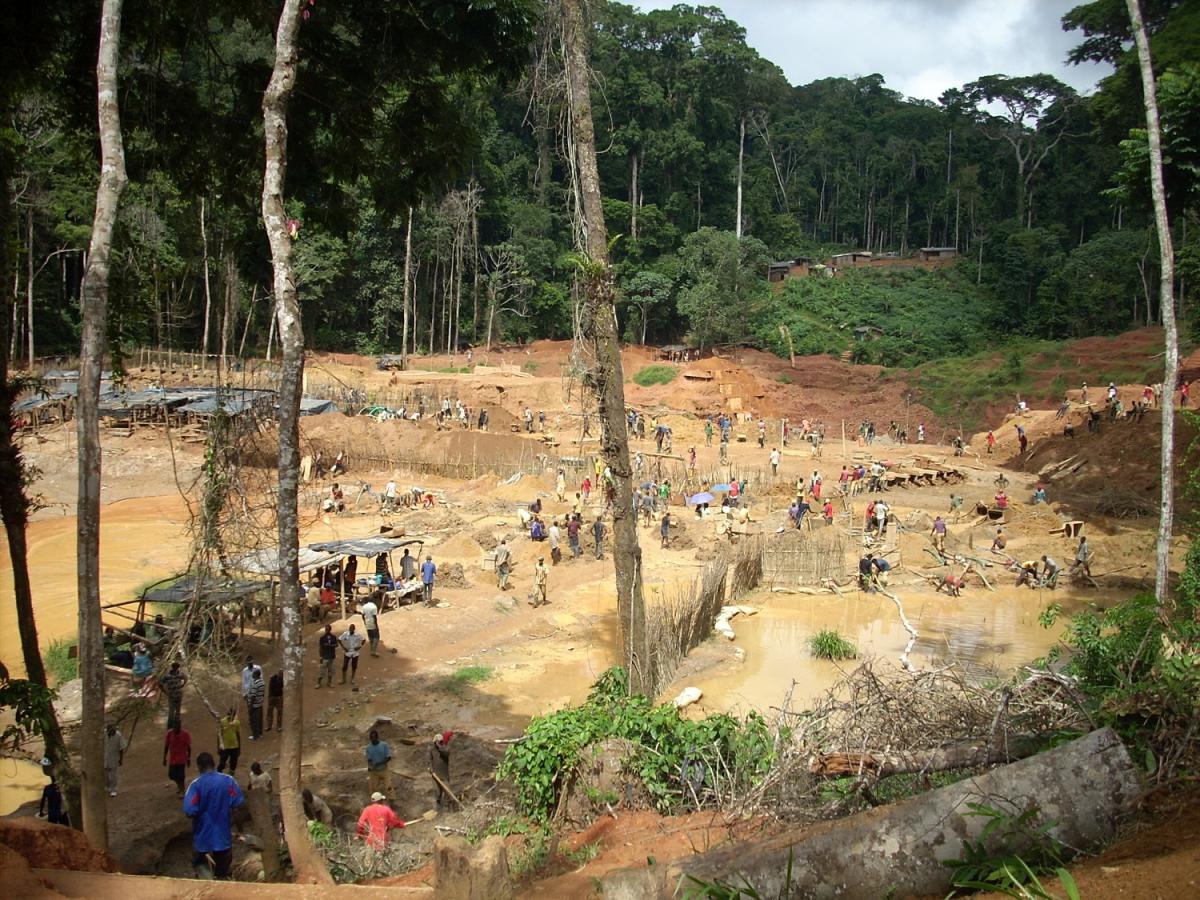
So, what mining takes place in forests? Many different minerals are mined in forests, with gold, iron ore, and copper most commonly mined by large-scale operators in forests. Bauxite, titanium, and nickel are the most reliant on forest-based mines, as the ores that contain them are mostly found in forest areas. All these minerals are crucial components of low-carbon technologies as well as for cell-phones and computers.
Importantly, it isn’t principally the mine itself that causes deforestation. Our research shows that a mine is often surrounded by large-scale forest losses in areas outside the mining permit area, with notable spikes in deforestation when the mines are first established. This forest loss is largely the result of new roads, railways, ports and other infrastructure built to transport extracted minerals. In addition, the development of large-scale mines in previously uninhabited or inaccessible areas attracts people looking for new economic opportunities. The settlements they establish drive forest loss due to firewood demand, wildlife poaching, agriculture expansion and ASM activities.
To address this deforestation, a forest-smart approach to mining requires strong governance to manage the development and impacts of the mining sector, protect forests on a landscape level, and recognize and protect local community tenure and rights. It also requires responsible corporate behaviour, empowered communities, and engaged civil society stakeholders.
With this in mind, we analyzed almost 30 case studies of both artisanal and small-scale mines as well as large-scale mining operations to identify best practices that can improve forest outcomes and bad practices to be avoided. The result is a large number of practical examples and a set of 14 forest-smart mining principles.
Based on our case studies, no single site, operation, company, or country is wholly forest-smart. Yet, our case studies also demonstrate that a variety of countries are implementing forest-smart practices and applying strong policies. One key finding of our work is that political will and coordination between government entities and other stakeholders is crucial for forest-smart outcomes.
In Madagascar, the establishment of coordination platforms between managers of a national park and local authorities helped to develop effective strategies to manage illegal artisanal mining in the park and improve agricultural practices to reduce pressure on forest.
In Ghana, a mining company included community stakeholders as partners in planning, decision making, and implementation to achieve positive outcomes for forests and communities. This ongoing consultation led to communities receiving long-term stakes in the work through secure forest plots. used for sustainably managed small-scale commercial production.
In Zambia, a mining company partnered with the Forestry Department and the Department of National Parks and Wildlife to manage a large forest landscape, including the West Lunga National Park, together with local communities to protect the forest landscape and prevent further deforestation.
Our analysis identified priority countries for applying the forest-smart principles, using the criteria of high forest cover, high economic dependence on mining, a high density of mines in forest areas, and significant greenhouse gas emissions from forest degradation. Countries identified include Guinea, Ecuador, the Democratic Republic of Congo (DRC), Zambia, and Indonesia, countries where the World Bank is active in both forest conservation and mineral sector governance, and thus well positioned to help bring together experts, governments, companies and communities to implement forest-smart mining approaches. By working together, we can utilize the raw materials needed for clean-energy technologies and conserve forests at the same time – protecting the world’s forests, reducing emissions and stepping up to the climate challenge.
This blog by Kirsten Hund and Erik Reed was originally published by The World Bank
For stories and updates on related activities, follow us on twitter and facebook , or subscribe to our mailing list for regular updates.
Last Updated : 06-16-2024
Trees and forests are key to fighting climate change and poverty. So are women
According to WRI's ‘Global Forest Watch’, from 2001 to 2017, 337 million hectares of tropical tree cover was lost globally – an area the size of India.
So, we appear to be losing the battle, if not the war, against tropical deforestation, and missing a key opportunity to tackle climate change (if tropical deforestation were a country, it would rank 3rd in emissions) and reduce poverty. A key question, then, is what can forest sector investors, governments and other actors do differently to reverse these alarming trends?
One way to speed up our efforts is to proactively include the role of women in the design of forest landscape restoration and conservation efforts. It is only recently that people developing forest restoration programs have thought about their impact on women, and the risks of failure that come with ignoring women’s needs and potential contributions.
We know that men and women access, use and manage forests differently, with differing knowledge and roles in the management of forests and use of forest resources. Although there is still limited evidence of the magnitude and breadth of impacts achieved by implementing gender-responsive policies and practices in the forest sector, we are starting to see more evidence that taking into account gender differences could lead to behavioral changes that increase tree cover and improve the livelihoods of the poor.
Considering gender differences in the use of, access to, and benefits from forest landscapes has led to more fair and effective design of interventions and institutional arrangements that have maximized program results and successes in addressing deforestation in many countries.
For example, in Brazil, supporting women’s non-timber forest product (NTFP) microenterprise groups resulted in increased incomes and empowerment, as well as a reduction in deforestation. In India and Nepal, increasing women’s participation in community forest management groups led to improved forest conservation and enhanced livelihoods. In Uganda, a gender-transformative ‘adaptive collaborative management’ approach for communities resulted in tens of thousands of trees being planted by women for the first time both on-farm and in forest reserves, improved food security, and the election of 50% women leaders in forest management groups. In Kenya, the Green Belt Movement launched by Nobel laureate Wangari Maathai, with women’s empowerment at its core, has planted over 51 million trees.
The thought of designing and implementing gender-transformative landscape initiatives of any type (projects, programs, policies, capacity strengthening efforts, etc.) can be daunting for development practitioners or decision makers without experience considering gender. It doesn’t have to be.
A recently released paper from the World Bank’s Program on Forests (PROFOR) examines the types of gender inequalities that exist in forest landscapes, and the gender considerations or actions that many countries are taking to address these gaps. It reviews and synthesizes a wide range of World Bank and partner projects and forest sector investments in different regions.
The PROFOR paper aims to stimulate greater understanding of potential opportunities by providing suggestions for gender-responsive actions that developers and leaders of forest projects, programs and policies can consider. Depending on which forest actor you are, applying and tailoring these suggestions to your context specific circumstances can ensure more effective and equitable impacts:
- A developer or investor in forest landscape projects can consider establishing performance-based contracts with joint spousal signatures for planting and protecting trees on farms, as well as near and inside forests, or including budget line items for gender-targeted NTFP activities.
- Governments, particularly forest-related agencies, can train forest personnel in the collection of sex-disaggregated data and inclusive, participatory engagement and forest landscape management planning processes, or facilitating registration for forest-related programs in easily accessible spaces where women already go (e.g. schools, health care centers).
- Investors, development agencies and private sector actors can find ways in which to make direct payments to women (e.g. via cellphone) for forest restoration and agroforestry activities or supporting rural women’s leadership capacity and strengthening activities.
PROFOR’s paper, along with a guidance note for project designers, provide many more examples of how gender analysis and actions can contribute in forest landscapes and of how this research is already being applied on the ground. For example, the World Bank’s Forest Carbon Partnership Facility (FCPF) includes several countries that are using this tool to design REDD+ readiness and large-scale programs that ensure women are partners in the planning, operation, and deployment of climate finance.
The bottom line is that greater investment in forest landscapes and agroforestry will be critical in efforts to address climate change and rural poverty challenges in many countries. The success of these investments will be enhanced by considering gender-responsive activities and actions when designing and implementing forest landscape projects and programs.
This blog by Patti Kristjanson was originally published by The World Bank
For stories and updates on related activities, follow us on twitter and facebook , or subscribe to our mailing list for regular updates.
Last Updated : 06-16-2024
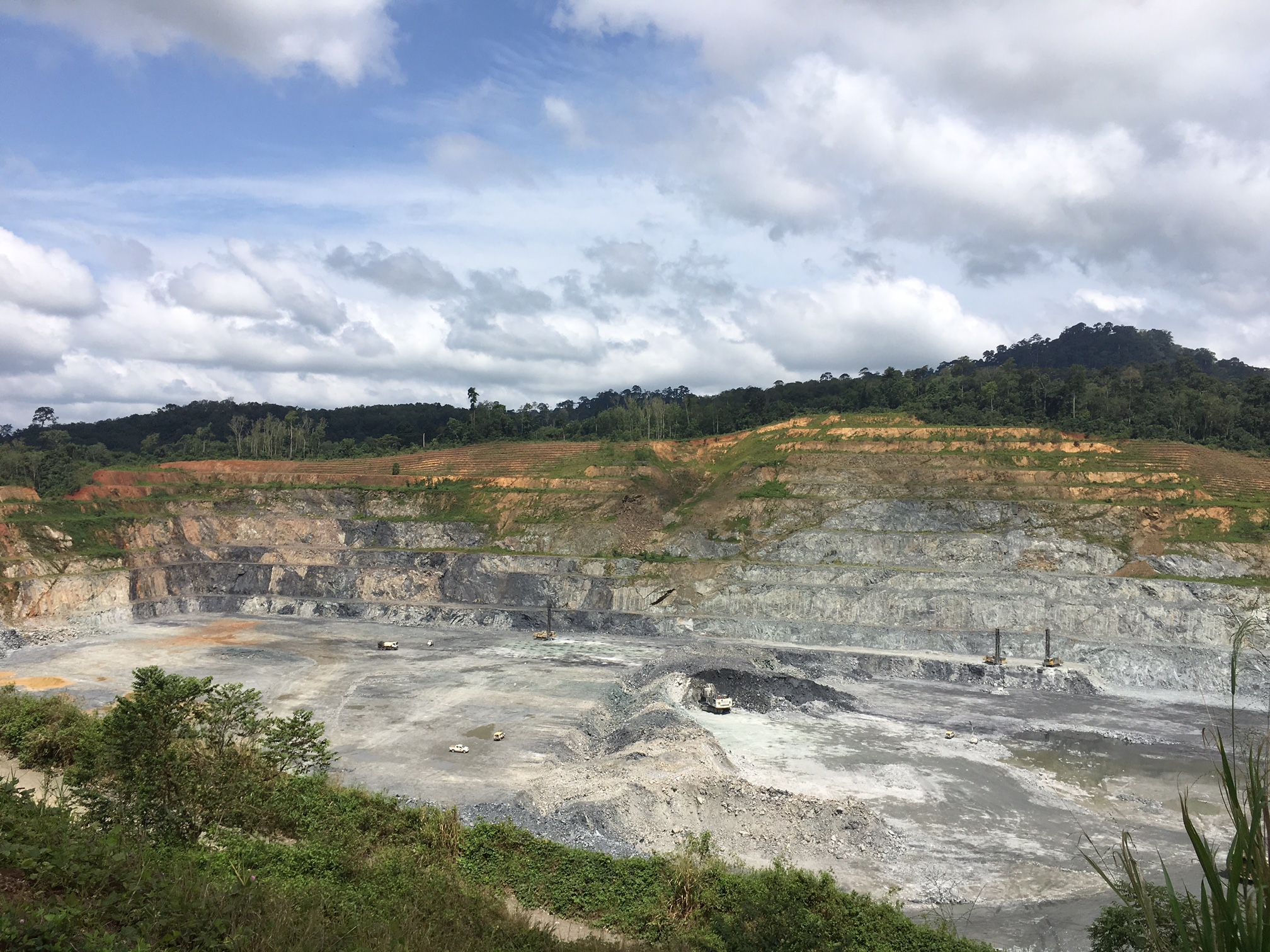
Share
Forest-Smart Mining to Advance the New York Declaration on Forests and the Sustainable Development Goals
Forests are critical for sustainable development as they provide oxygen, significantly help curb climate change, are home to a majority of global biodiversity and provide livelihoods for nearly 2 billion people. But deforestation is accelerating.
It is estimated that mining accounts for up to 7% of forest loss in developing countries. “Forest-smart mining” will be needed to both minimize direct and indirect impacts of mining on forests and to pursue opportunities for positive forest outcomes. This will require public policies, corporate practices and multi-stakeholder partnerships to address economic, social, and governance drivers of deforestation through an integrated landscape-level approach.
This dynamic side-event will be an opportunity to raise awareness about the relationship between mining and deforestation, present new research findings on forest-smart mining, and provide an overview of the New York Declaration on Forests and its Global Platform. It will highlight examples of forest-smart policies, practices and partnerships and build a shared understanding of what changes, innovations, and new initiatives may be useful to accelerate action.
Side-Event at the UN General Assembly Tues. 25 September 2018 Scandinavia House: 58 Park Avenue, New York, NY 9:30am-11:30am
Find out more here.
Photo: Tom Maddox / Fauna & Flora International
For stories and updates on related activities, follow us on twitter and facebook , or subscribe to our mailing list for regular updates.
Last Updated : 06-16-2024

Share
Five reasons to celebrate forests
Trees may not seem like anything exceptional, but they perform a myriad of services that we rarely recognize.![]() From making cities cleaner and cooler, to providing economic lifelines to millions of people, trees and forests are central to our environment as we know it.
From making cities cleaner and cooler, to providing economic lifelines to millions of people, trees and forests are central to our environment as we know it.
Unfortunately, global forest loss is at an all-time high, and unless we act soon, we risk unprecedented (and possibly irreversible) ecological changes.
It’s time to stop taking forests for granted. On this International Day of Forests, take a minute to enjoy the trees in your environment and to appreciate just how important forests are around the world. Here are five reasons to celebrate forests:![]()
1. Higher incomes, more resilient communities
Across the world, trees and forests provide benefits to around 1.3 billion people, including as a source of food, timber, fodder, fuel, and habitat for biodiversity. A PROFOR study in five African countries found that trees on farms make up as much as 17 percent of rural households’ gross annual income. And in Lao PDR, research shows that villages with greater access to forests are less sensitive to climate change because they can to turn to forests for resources during hard times. Ongoing PROFOR work is exploring the ways in which forests might also provide pathways out of poverty.
2. More jobs
Global demand for wood is growing rapidly. By investing in the forest sector, countries can create good jobs, support local artisanship, and formalize timber markets so that wood is sustainably harvested, and natural forests are protected. In Colombia, a PROFOR-supported study estimated that the forestry sector could reach a production value of over $4 billion and create 35,000 permanent jobs in forest plantations and industries. Another study in the Congo Basin found that urban timber markets already generate USD $15 million annually and employ at least 5,000 people.
3. More productive and cost-effective agriculture
Far from crowding out crops, trees can often improve agricultural yields by improving soil quality and regular water availability. PROFOR research in Malawi found that, instead of subsidizing fertilizer, the government could save about $71 million every year by encouraging farmers to grow trees in their maize fields. And agroforestry is not just an option for small farms; private enterprises like Fazenda da Toca in São Paulo are proving that large-scale agroforestry is viable and cost-effective.
4. Lower risk of natural disasters
Forests are a critical regulating force for our environment. A PROFOR study in the Philippines showed that higher forest cover ensures a more reliable water supply during the driest months of the years, while reducing the volume of floodwater during the wettest months. Forests also stabilize hillsides by decreasing the risk of soil erosion, helping to reduce the impacts of landslides and other natural disasters. Compared to man-made structures like dams and, maintaining forests is a much more cost-effective way to provide these benefits.
5. A more stable climate
Not only do trees help to cool our immediate surroundings, but by storing carbon they reduce the impacts of climate change. Unless, of course, we fail to protect them. An ongoing PROFOR activity finds that the southern Amazon Forest is under such stress from droughts and fires that it might soon become a net emitter of carbon dioxide (CO2). The good news is that it’s not too late to start restoring a billion hectares of degraded forests worldwide. A recent report, funded by the Climate Investment Funds (CIF) and PROFOR, estimates that investing in forest restoration and increased use of wood products in six countries could result in more than 150 million tons of CO2 equivalent being sequestered.
For stories and updates on related activities, follow us on twitter and facebook , or subscribe to our mailing list for regular updates.
Last Updated : 06-16-2024
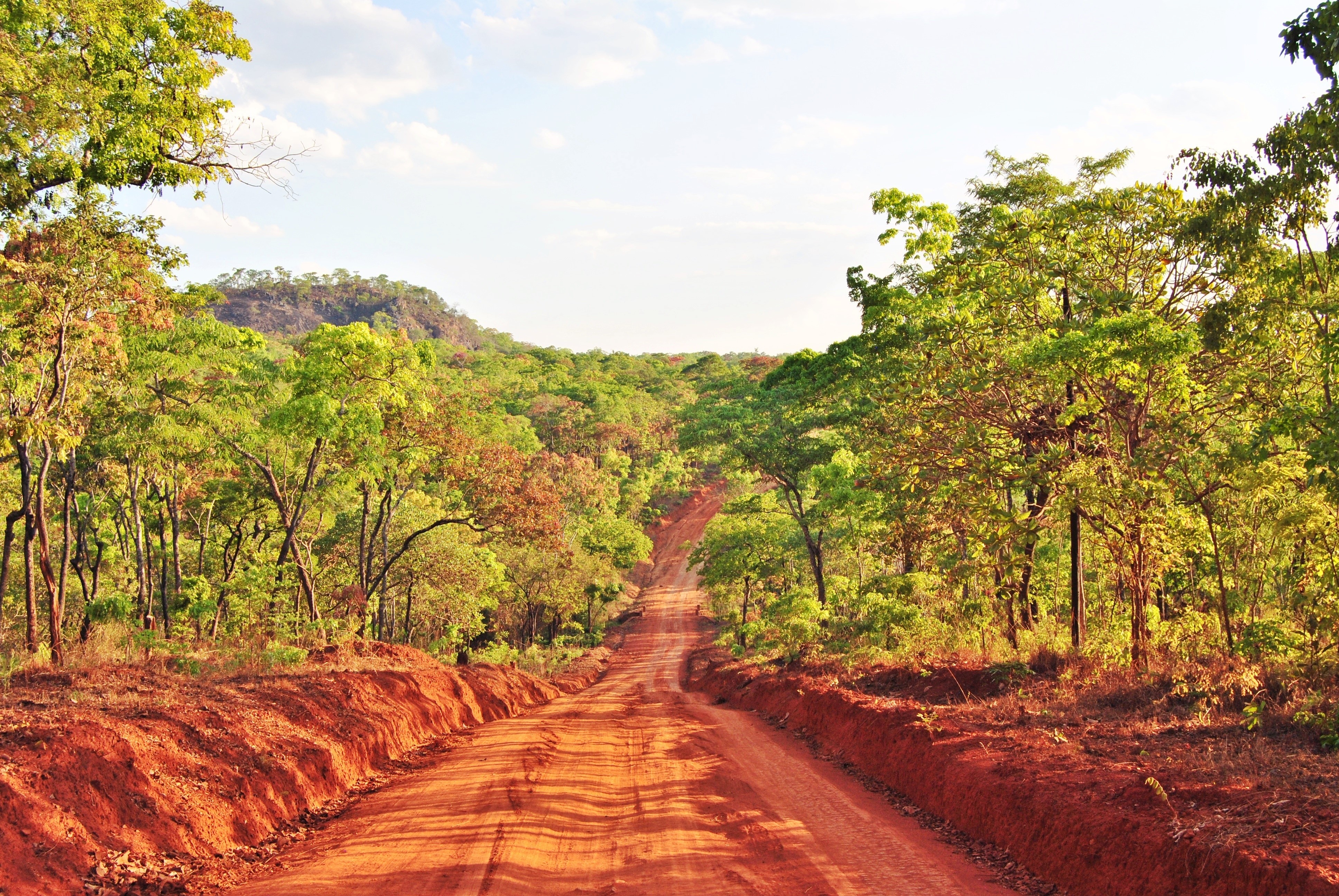
Share
Related Links
Forest Resilience for the Southern Amazon: Managing the Agricultural Frontier
Promoting green growth in Colombia: The potential for commercial reforestation
How Productive Forests Can Help Foster Green Growth and Mitigate Climate Change
Cutting Deforestation Out of the Cocoa Supply Chain
In Mozambique, Government, Conservationists and Private Sector Come Together to Protect Biodiversity
Think Big: Landscapes rich with trees deliver multiple benefits
When thinking of forests, don't forget the value of trees
Ecological restoration, critical for poverty reduction
New tool to deliver swifter, better data on forests-poverty linkages
In the Philippines, forest investments offer significant returns
Being inspired by gender actions in forest landscapes around the world
Land tenure for forest peoples, part of the solution for sustainable development
Resolving forest tenure is key to promoting sustainable development and human rights
Does mining need a forest-smart approach? You bet it does!
Forest-smart strategies are taking off
With greater forest knowledge, sustainability is within reach - if we act quickly
For forests, 2017 could be seen as a tale of discouraging superlatives. We learned that global forest loss is at a record high since data collection started in 2000. Damage from wildfires in the United States was the costliest in the country’s history. And in Brazil, September 2017 saw more forest fires than any other month on record.
There is no doubt that the world’s forests are – like many other ecosystems – approaching a dangerous tipping point. Some of PROFOR’s own analysis draws similar conclusions: for instance, an upcoming report suggests that the southern Amazon may soon be caught up in a cycle of droughts and fires that render the forest into a net emitter of carbon. These and other threats to forests could not only have devastating ecological and climatic impacts, but are likely to profoundly affect the wellbeing of communities who depend on forests and the services that they provide.
Despite this gloomy news, it is encouraging to see an ever-growing body of knowledge on the economic, social and environmental contributions made by forests. More positive still is how much we are learning about the many opportunities for expanding the role of forests to make real development gains.
For example, PROFOR-supported research finds that forest-rich Colombia could significantly boost revenues and jobs by investing in commercial plantations, which would also help protect natural forests and help the country meet its pledge to reduce greenhouse emissions. Another report, co-funded by the Climate Investment Funds, highlights how six countries could sequester more than 150 million tons of CO2e (carbon dioxide equivalent) by 2030 by supporting forest restoration and the increased production and use of wood products.
PROFOR and partners also made a business case for moving toward deforestation-free production models in the cocoa industry and set out a set of principles to help advance that goal. And where the impact of commercial activities on forests just can’t be avoided or sufficiently minimized, PROFOR is guiding countries like mineral-rich Mozambique on the use of “last resort” options that can still contribute to biodiversity preservation.
Importantly, we know more about the value not just of forests, but also of forested landscapes. A study of tree-based systems in Rwanda and Malawi recommends promoting trees on farms instead of subsidizing fertilizer - a move that could reduce government spending by millions of dollars every year. These and other ecological restoration processes can - and need to - be massively scaled up to maintain important safety nets and help communities move out of poverty.
PROFOR-funded resources like the Forest-SWIFT survey tool are building understanding for the ways in which poor communities depend on forests, and helping to develop targeted programs that simultaneously enhance ecosystem benefits and conserve habitats. Another PROFOR-supported study in the Philippines finds that forest investments can be highly cost-effective, especially when adapting to climate change.
But these gains won’t happen on their own. They require evidence-based investments that consider a whole raft of ethical and governance factors, including the meaningful participation of men and women in forest management decisions. Another crucial consideration – but one that is often considered too risky - is the issue of land rights for forest peoples. A PROFOR book on tenure systems in six Latin American countries aims to advance the discussion of how strong community rights can promote sustainable forest management as well as economic development.
Finally, there has been heartening progress in understanding the role of forests as part of many non-traditional sectors like disaster risk management, agriculture, and energy. PROFOR has been a staunch advocate of these “forest-smart” solutions, and early results are highlighting the importance of this approach. A PROFOR activity on forest-smart mining, for example, revealed that a substantial number of the world’s mines are located in forests. We hope 2018 will see the continued growth of forest-smart strategies, within our own work and that of our partners.
While the year ahead presents some daunting challenges for preserving and protecting forests, and the urgency is greater than ever, we also have better knowledge and tools at our disposal. So, let’s get to work. Won’t you join us?
For stories and updates on related activities, follow us on twitter and facebook , or subscribe to our mailing list for regular updates.
Last Updated : 06-16-2024
In the Philippines, forest investments offer significant returns
It’s well understood that forests are worth more than the sum of their trees. As an ecosystem, forests provide an astonishing array of benefits, from the more obvious ones like timber, fruits and nuts, to the intangible ones like maintaining reliable flows of clean water. But how much are these benefits actually worth? And are forests really so much better at providing these services than, say, human-engineered technology?
According to a new study in the Philippines, reforestation and forest rehabilitation may truly be the most cost-effective option for producing valuable ecosystem services that many people depend on – especially given the uncertainties brought on by climate change.
With funding from the Program on Forests (PROFOR) and technical support from the World Bank, the Government of the Philippines studied three different areas to assess the value of certain “invisible” forest-derived benefits. The research found that healthy forests help reduce risks to climate variability by providing high-quality ecosystem services that contribute to more resilient communities.
For instance, the study showed that in the Upper Marikina River Basin – a degraded watershed upstream from Manila, where most inhabitants live below the poverty line - higher forest cover results in 149 to 167 percent higher water yields during the driest months of the year, ensuring a more reliable water supply during times of scarcity. Meanwhile, during the wettest months, forests can reduce the volume of floodwater in the watershed by 27 to 47 percent. Forests also stabilize hillsides and mountainsides in the region by decreasing the risk of soil erosion by 68 to 99 percent per hectare – helping reduce the impacts of natural hazards like flooding and landslides.
“These services are worth billions of pesos,” emphasized Eugene Soyosa, Economist at the Philippines Forest Management Bureau. “Maintaining forests has a much lower cost than if you would build check dams or other erosion control measures.”
Crucially from a sustainable development perspective, forest ecosystem services are integral to the well-being of poor communities in the Philippines. According to the findings at one pilot site, people obtain about 7 percent of their annual cash income from selling forest resources like bamboo, charcoal, fish, and bush meat.
“Poor households are very dependent on forests, especially for water provisioning services” said Maurice Andres Rawlins, Natural Resource Management Specialist at the World Bank and a lead author of the study. “If these services were lost and people had to pay for them, it could certainly set back poverty reduction gains.”
“In the pilot site of Upper Marikina, forests have been degraded for charcoal-making and the water supply is decreasing; at other sites, the siltation is very pronounced,” explained Soyosa. “When we first talked to communities, they perceive the idea of ecosystem services as too technical. But as the conversation moves on, it turns out that they know a lot about these benefits, and are being heavily impacted by the loss.”
Forest ecosystem services become more important as the impacts of climate change intensify. The Philippines - being an archipelagic country that is naturally vulnerable to typhoons, earthquakes and storm surges– also ranks among the top 5 countries most affected by climate change. According to projections, all areas of the Philippines will get warmer, contributing to more frequent extreme weather events. Dry seasons will become drier, and wet seasons wetter. This study confirms that forests provide services that make communities more resilient to climate change shocks, including acting as a safety net against poverty.
The Government of the Philippines is already trying to reverse trends of severe deforestation and forest degradation across the country, and has been working on the valuation of ecosystem services with help from the World Bank-led Wealth Accounting and the Valuation of Ecosystem Services (WAVES) Global Partnership. This work is motivated by the recognition that documenting economic values of forest resources can help make forest investments more attractive, and thus improve the livelihoods of poor upland communities.
“The Philippines is committed to regreening,” said Rawlins. “They don’t want to just plant forests where there are none, but to undertake more strategic thinking about which areas to prioritize, and what kind of trees to plant. That’s where measuring specific ecosystem services results is so important. The question now is, ‘How do we mainstream these processes into planning?’ The ability of the government to include this work in their regular processes is the true sign of success.”
Findings of the study are intended to guide the Philippines’ National Greening Program by including forest ecosystem services into land use planning processes. Results have also shaped the indicators in the country’s Forest Investment Road Map (FIRM), which is the government’s strategy for accelerating sustainable economic growth in the wood industry through private sector investment. The FIRM, in turn, is consistent with the Philippines Master Plan for Climate Change-Resilient Forestry Development, which aims to promote the development of forest plantations and increase the participation of the private sector, local government units, and organized upland communities.
“In the Philippines we have not yet established a national database on forest ecosystem services in terms of inputs into policies and programs,” said Larlyn Faith Aggabao, Senior Forest Management Specialist at the Forest Management Bureau. “This study is a useful start to institutionalizing and formulating a coordinated effort among different agencies for data collection, data sharing, and analysis. This information would provide significant inputs to forestry plans because there are trade-offs to any policy, and these need to be managed.”
(Photo credit: Gordon Bernard Ramos Ignacio)
For stories and updates on related activities, follow us on twitter and facebook , or subscribe to our mailing list for regular updates.
Last Updated : 06-16-2024

Share
Related Links
Commercial Reforestation Potential in Colombia
Situación actual y potencial de fomento de plantaciones forestales con fines comerciales en Colombia
Current situation and future potentials of commercial forest plantations in Colombia
External Related Links
Cambio climático tendrá más ayuda internacional
Colombia y Banco Mundial buscarán recursos para mitigar impacto del cambio climático
Colombia y Banco Mundial buscarán recursos para mitigar impacto del cambio climático
Promoting green growth in Colombia: The potential for commercial reforestation
For a forest-rich country, Colombia faces a surprising economic dilemma. More than half of the country is covered by forest, and yet the growing demand for wood products is being supplied by imports – not local industry.
While the construction sector – the largest consumer of wood in Colombia – has grown by an impressive 7 percent between 2005 and 2014, the contribution of the forestry sector to national GDP has actually fallen over this time period, from 1.4 percent to 1.1 percent. Meanwhile, Colombian exports of wood products have stagnated around 3 percent of national production. Based on projections of future demand, this supply gap will only widen: by 2030, Colombian markets will need 4 million m3 more in raw wood materials than it currently produces domestically.[i]
These numbers suggest that Colombia is missing out on a significant investment opportunity, according to a new report commissioned by the Government of Colombia and the World Bank, with support from the Program on Forests (PROFOR).
The study finds that Colombia could not only use its own resources to meet all local demand for wood products, but also supply international markets, which are also on the rise: global demand for timber, pulp and paper products could quadruple by 2050.
Such an expansion would require an ambitious export scenario, where Colombia increases its commercial forest plantations by 464,000 hectares, but is well within the realm of possibility. According to recent land classifications, Colombia has 24.8 million hectares of land suitable for commercial reforestation, of which 30 percent (7.3 million hectares) are considered highly suitable.[1] Eventually, the gross production value of Colombia’s forestry sector could be as high as 12 trillion Colombian Pesos (over 4 billion USD), while creating 35,000 permanent jobs in forest plantations and industries.
“Colombia has broad potential for developing commercial reforestation programs, given its excellent conditions for tree growth, as well as its strategic geographic location for foreign trade and numerous free trade agreements,” said Karin Kemper, World Bank senior director for the Environment and Natural Resources (ENR) Global Practice, at the official launch of the report in Bogotá, Colombia. “This effort would not only have important economic and social impacts by creating jobs and reducing poverty in the countryside, but also play a significant role in mitigation and adaptation to climate change.”
Indeed, commercial reforestation could contribute to Colombia’s pledge of reducing its greenhouse gas emissions by 20-30 percent – a promise that the government takes seriously. "Colombia is committed to policies and tax reforms that help us successfully implement the Paris Agreement, as evidenced by the structural tax reform approved last year," confirmed Minister of Finance Mauricio Cárdenas.
"This report is fundamental in the context of transforming rural areas and the Colombian Government’s Green growth strategy,” said Silvia Calderón, director for environment at Colombia’s National Planning Department, in separate remarks. “Its recommendations will contribute to the sustainable use of natural resources and to the development of the forest economy."
Given Colombia’s high level of political support for green growth policies, what will it take, in practice, to fulfill the potential of the country’s forestry sector? The report lays out detailed recommendations for increasing the productivity of commercial forest plantations and the governance structure around them, as well as improving the competitiveness of Colombian wood processing industries in domestic and international markets.
“By providing very realistic and concrete recommendations, with set targets and timelines, we hope this report can guide the Colombian government in making the most of its exceptional forest resources, while also helping to protect natural forests that might otherwise be threatened by the growing demand for wood products,” said Franka Braun, World Bank senior carbon finance specialist. “Colombia has already expressed interest in commercial reforestation investments in the Orinoquía region, so this initiative is off to a promising start.”
[1] Unidad de Planificación Rural Agropecuaria (UPRA) 2014: Zonificación para plantaciones forestales con fines comerciales a escala 1:100,000, http://www.upra.gov.co/publicaciones/-/asset_publisher/Gcha9Rfz1eZm/content/zonificacion-para-plantaciones-forestales-con-fines-comerciales-colombia-escala-1100-000
[i] As measured in m3 of roundwood equivalents, defined as the volume of small logs typically used in the manufacture of wood-based products like wood pulp, paper, furniture and plywood.
Photo: Santiago Restrepo Calle/Flickr.com
For stories and updates on related activities, follow us on twitter and facebook , or subscribe to our mailing list for regular updates.
Last Updated : 06-16-2024








